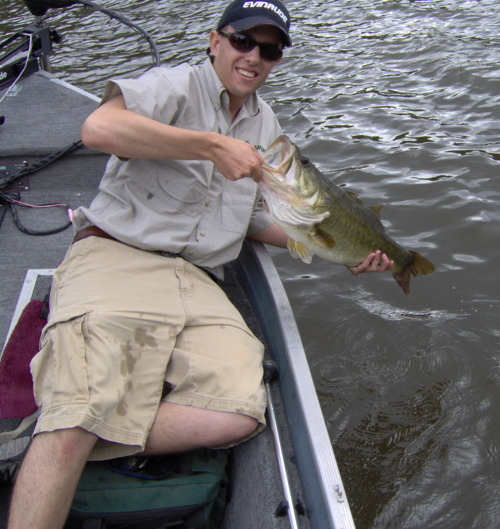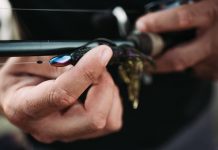By: Trevor Knight – Fishidy Pro Angler
It would be really easy for me to make this blog post about the new castable umbrella rig that’s all the rage in tournament fishing. However, I thought it would be better to give all you Fishidy fans a trick you won’t easily find elsewhere. Some of you lucky anglers living down in south Florida can even put it to use right now.

The spawn is one of those times of year many anglers love because they get a chance to catch a really big bass, and they get to do it while looking at the lunker the whole time. From January through July, depending on where you are, big bass make themselves more vulnerable than any other time of year. We all know they have to spawn, and they have to come shallow to do it. The fact that we all know this puts a tremendous amount of fishing pressure on these giant bass during the spawn. The ones that have been smart enough to make it to line breaking size are also the hardest to catch. The trick I’m about to share with you I learned this past winter, and it will help make catching those educated lunkers much easier. It’s also something that many of the top sight fishermen in the country don’t want you to know about.
The biggest reason anglers have trouble catching bass by sight fishing is the fact that if you can see the bass, then the bass can see you too. This immediately causes educated bass to have a bad case of lockjaw. The real trick to catching these bass is to know exactly where they are without actually seeing them or letting them see you. All you need to accomplish this is a good pair of polarized glasses, a push pole, some sort of anchoring system and green tomato stakes. Green tomato stakes you ask? No, we are not growing vegetables here, but tomato stakes have more uses then you’d think. The stakes are used to mark spawning beds.
Here’s the process:
- You want to have a bundle of tomato stakes ready on the deck of the boat.
- Go into an area where you anticipate to find spawning bass. A great example would be a shallow cove with a hard bottom protected from the north wind.
- Get out a push pole and stealthily move through the area scanning for beds.
- When you find a bed with a big bass on it go right to it. The bass will swim off, but that’s ok.
- Take one of the stakes and push it right into the sweet spot of the bed. The sweet spot is usually either a really shiny spot on the bed, maybe from a group of shells, or a dark little patch like a few twigs in the bed.
- Once you push the stake into the sweet spot it should be visible at least a couple feet or more above the water depending on how deep the bed is.
- Continue moving around the area marking several beds with the stakes. You want to use the push pole instead of the trolling motor because the noise of the trolling motor will spook the bass easily and make them much harder to catch even if you cannot see them.
- After you’ve marked several beds, back off and wait 10 to 20 minutes. The bass that moved off the beds should return in that time frame. You’ll know when the bass return to the bed because the stake will start shaking. That’s the bass trying to push the stake out of its bed.
- Position yourself a cast length upwind of the nest if possible, and pick up your favorite bed fishing lure.
- Anchor yourself in place either with a rope and weight of some sort or a shallow water anchoring system.
- Make a cast past the bed and bring the line right against the tomato stake.
- Reel your lure up to the stake and allow it to fall. Your lure will be right on the sweet spot of the bed, and the bass will have no idea you’re in the area.
- Shake your lure against the stake. Within a few seconds of shaking the lure on the sweet spot, the bass should grab it.
- Set the hook and fight the bass to the boat. You won’t know if you hooked the male or the lunker female until the fight begins.
- Repeat the process with the other stakes you’ve set, and you can end up catching a huge stringer of bass!
The tomato stakes are great for this because they’re affordable, light weight and blend in very well with the surrounding area if vegetation is present, i.e. a typical southern lake. The green tomato stake looks like a reed sticking up out of the water. Other anglers will most likely pay no attention to your marked beds, which makes this great for tournament fishing around a group of boats. You can even go out during practice and mark the beds. Simply break the tomato stake off close to the water’s surface so they are barely visible, and other anglers will pass right by. Now this will not work as well on lakes devoid of vegetation, but you can still mark a few beds at a time without drawing much attention from other anglers.
I promise you, if you try this little trick the next time you’re fishing for bedding bass you will be pleasantly surprised with the results. The bass will be far less skittish, and you’ll find this system actually saves you time. You won’t have to spend hours sitting on top of a bed trying to pester a big bass into biting.
I hope you all found this trick as useful as I did. Now go get Fishidy!



